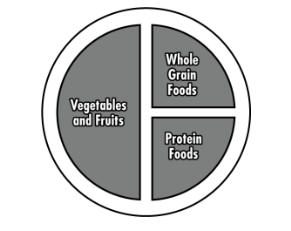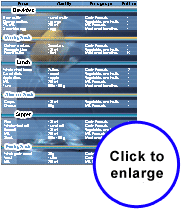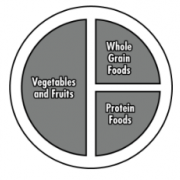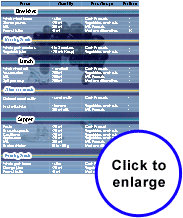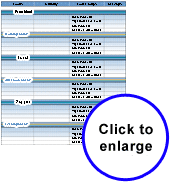In your second and third trimester, you will need to eat a little more. This can include an extra snack each day. Snacks can include a couple of healthy foods and a healthy drink.
This menu provides:
- Iron from whole grain bread and cereals, protein foods, and dried fruit
- Calcium and Vitamin D from lower fat unsweetened milk or soy milk beverage
- Folic acid from vegetables and fruits, protein foods, and whole grains
- Vitamin C from vegetables and fruits

